176 Seiten
180 Abbildungen
Großformat 24×30 cm,
schweres Bilderdruckpapier,
durchgehend vierfarbig
Hardcover
Fotobuch mit einem Vorwort von Alexander Scholz
Texte: Deutsch und Englisch
Preis: 60 Euro, da beim Verlag vergriffen (alter Preis 49,90 Euro)
ISBN: 3-7658-86007-7
Bucher Verlag in der Reihe „Lounge“, 2005
direkt hier bestellen: info@thomaskarsten.com
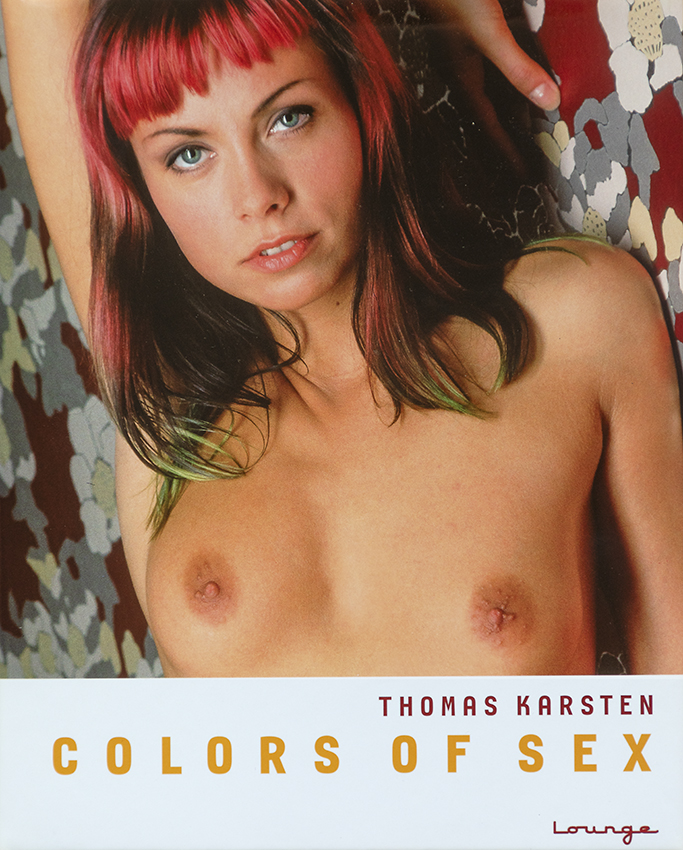
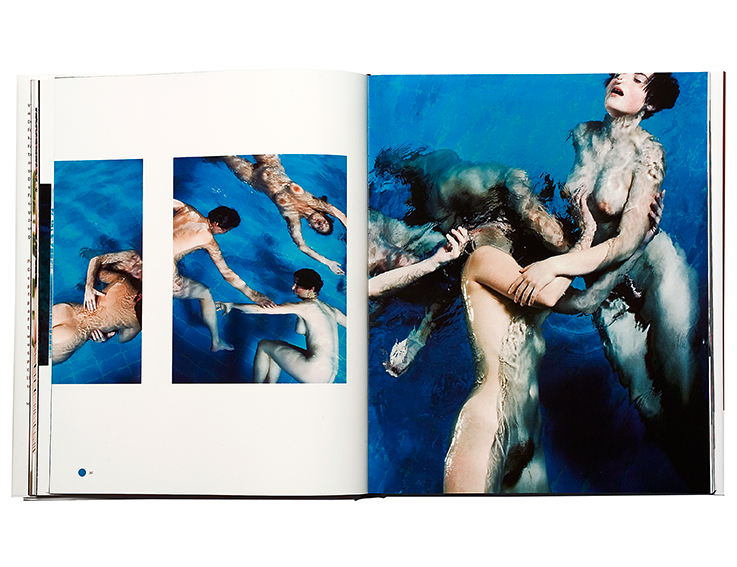
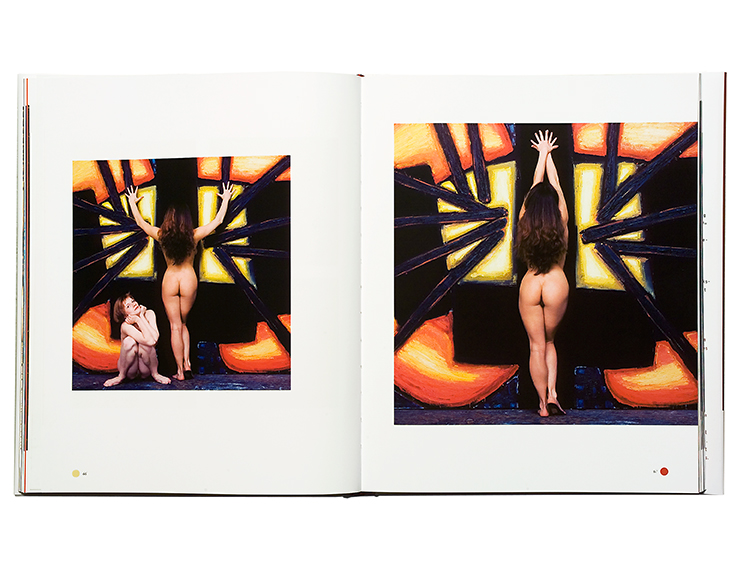
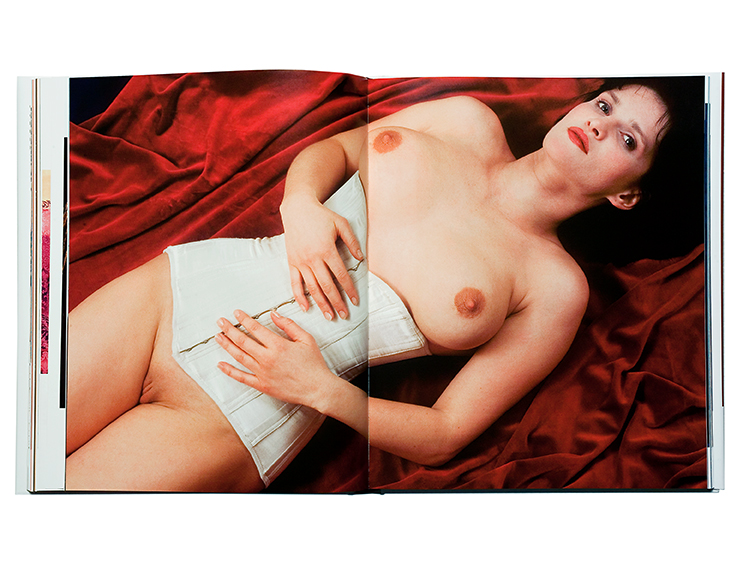
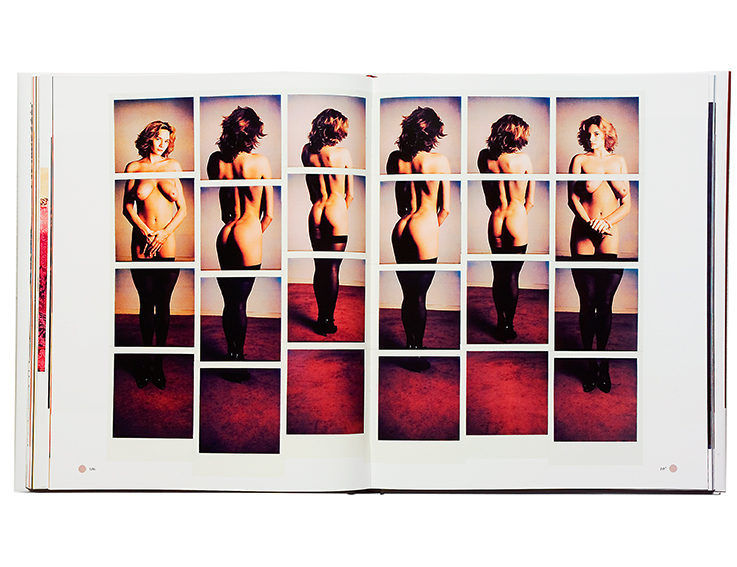
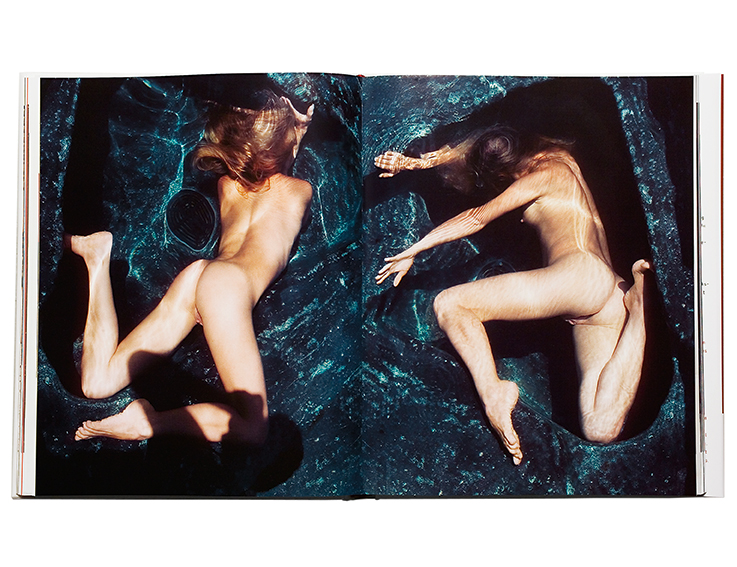
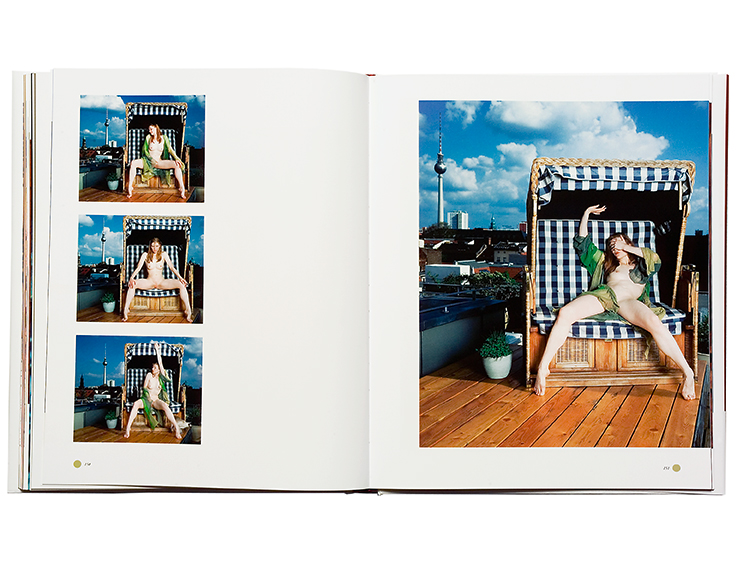
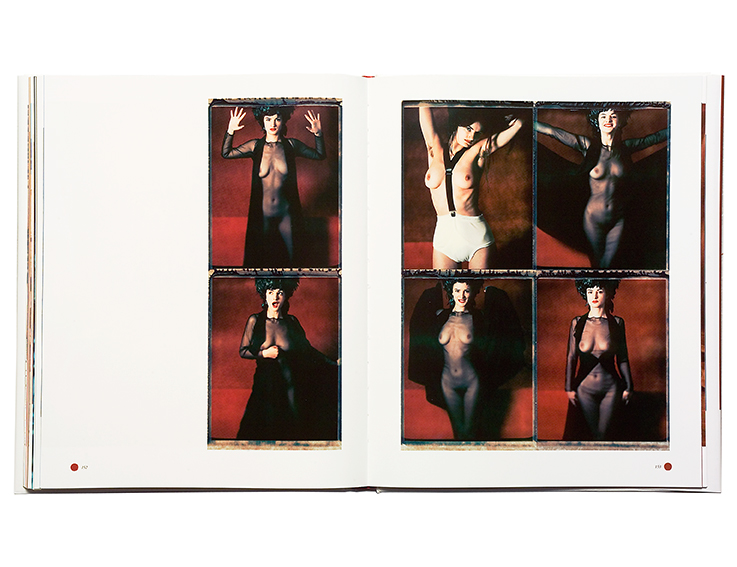
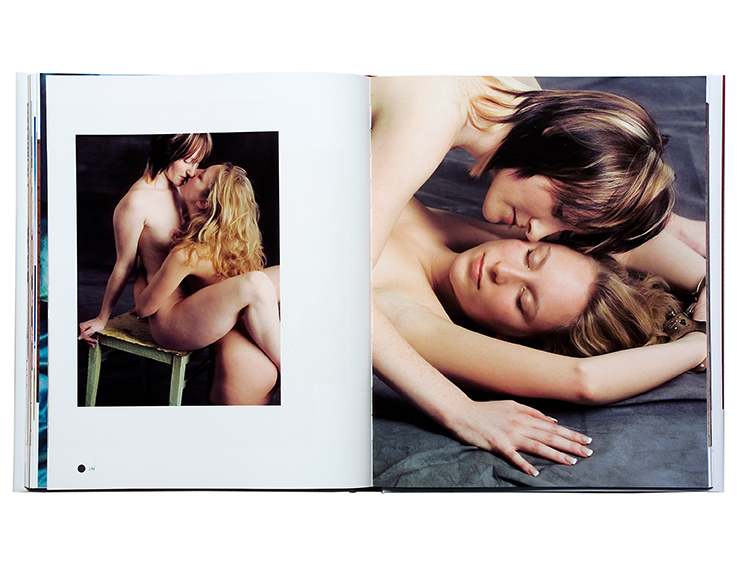
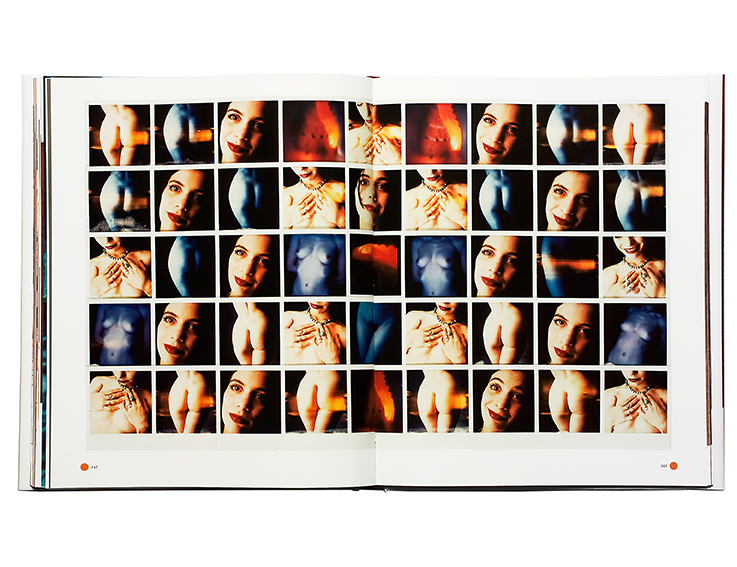
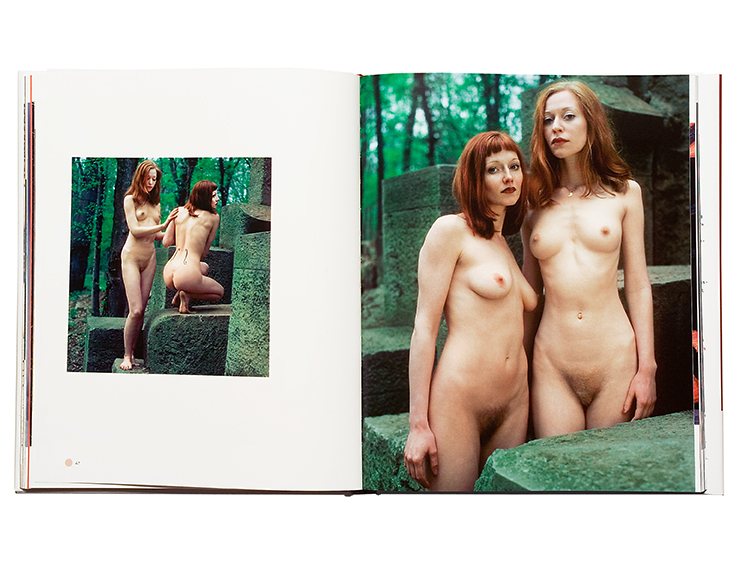
Vorwort
Erotic Style Goes Pop –
ein freudiger Videoclip in Buchform
Viele der Werke von Thomas Karsten sind inzwischen Klassiker der modernen Fotografie geworden. Dabei geht es um das sagenumwobene Spannungsfeld zwischen erotischen Momenten und „hoher“ Kultur. Die Erotik ist das Stiefkind der Kunstform Fotografie, so wie die Fotografie bis ins letzte Jahrhundert hinein fragwürdiges Stiefkind der Bildenden Kunst war. Das erscheint nicht verwunderlich, ist doch die Erotik bislang Bestandteil einer langen, vordergründigen Tradition billiger Magazine und steht seit jeher unter der Geisel der Werbeindustrie, die den nackten Körper aus der nie endenden Lust der Konsumenten in der abendländischen Kultur vergewaltigt.
Thomas Karsten ist seit über 20 Jahren vielen als Schwarz-Weiß Ikonograph der Aktfotografie bekannt. Grund genug für ihn, einen neuen Weg einzuschlagen. Als ich das erste Mal seine Bildauswahl für dieses Buch betrachtete, war ich erstaunt, wie sehr ihm auf einmal die Farbe dazu verhalf, zwischen stilsicherem Porträt und grenzüberschreitender Offenheit zum intimen Abbild des sonst in der erotischen Fotografie (oder besser gesagt in der Aktfotografie) versteckten Geschlechts zu wechseln, um dabei noch schärfer und genauer darzustellen als jemals zuvor. Sein klassischer, sein Thomas Karsten Stil in einem neuen Gewand, in einem bunten Gewand, wobei natürlich die Farbe sowohl aus kulturhistorischer als auch aus rein technischer Sicht ein Thema für sich ist. Oft hört man ja das Urteil, dass durch das Schwarz-Weiß eine Abstraktion entsteht, die Raum für Geheimnisse lässt, zum Träumen auffordert. Damit scheinen sich tatsächlich bestimmte Klischees und Vorurteile um Farbigkeit bzw. Schwarz-Weiß zu erklären. Macht also Farbe die Realität wahrhaftiger im Abbild? Das ist einerseits ein Ammenmärchen, aber andererseits wahr. Aber ist das Wahre damit das Schönere? Ist das Verträumte verklärter in Schwarz-Weiß, ist das jetzt noch ein Thomas Karsten?
Die Schnitte und Einblendungen sind großartig – das Gesicht das immergegenwärtige Detail; das Überweibliche, das Weltliche, die Bäume, die Topographie der Städte kommen dank der Farben hinzu und erscheinen dominanter in diesem Buch. Die Bilder wirken auf seltsame Art gestylt. Das liegt an dem jetzt in das Foto einbezogenen Raum.
Der Thomas Karsten Raum besticht eigentlich durch Leere. In diesem Buch erhält er eine neue Relevanz, aber es geht nicht um ein Tuch, die Karibik oder eine alte Mauer, diesem Irrtum sollte man nicht verfallen, es gilt, ein lyrisches Konstrukt zu kreieren, in dem dann doch das Wesentliche, die Frauen prägend bleiben. Hinter der Wahl zum Raum steckt kein System, er sucht das Einfache, das ganz Einfache, das wiederum zu den Frauen passen muss, ohne dass sie sich vertraut aber wohl fühlen sollen, denn allzu oft ist das Vertraute nicht genau das, was uns befreit, sondern vielmehr einsperrt.
Immer geht es um die Schönheit der Frauen; schön sind sie alle, egal ob sie nun tatsächlich einem bestimmten Ideal entsprechen oder nicht. Das ist auch genau das, was jegliche moralische Zwiespältigkeit über den Haufen wirft. Schön sind sie alle, vielleicht nicht schön für mich oder Sie, lieber Leser, für sich ein Ideal, nicht begehrenswert, erotisches Ziel, nicht aufreizend – natürlich belassene Menschen voller Stolz, Würde und Freude an sich selbst. Das kann zu einem Lebensziel werden, den Genuss an sich, den Stolz auf sich selbst und die erotische Lust, jene Antriebskraft, die alle schönen, teuflischen und großartigen Ergebnisse der Menschheit schuf, in Bildern zu erhalten.
Thomas Karsten wagt es, und seine Modelle wagen es sich in diesem Sinne, sich bei ihm in dieser Doppelbödigkeit porträtieren zu lassen bis hin zur genannten offenkundigen Wechselbeziehung zwischen Porträt der Augen und Porträt der Scham, des Geschlechts. Und wir alle lieben Geschlechter, zarte Falten, das Versteckte.
Oft habe ich nun schon, seitdem ich Thomas Karsten kenne, darüber nachgedacht, was ihn antreibt, sie alle, die Schönen und auch Hässlichen, so offen zu sammeln, sie zu animieren, sich, seiner Kunst zu öffnen und dabei ganz bei sich Selbst zu sein. Immer klarer zeichnet sich das Ziel eines Predigers ab: gesellschaftlicher Fortschritt mit Hilfe formsprachlicher Zwiespältigkeit, die die allgemein geltenden Moralvorstellungen in uns in Frage stellt. Das ist kulturgeschichtlich nichts Neues, aber mit Thomas Karstens Werk macht es dem Betrachter und auch den Modellen Spaß, an einer neuen Gesellschaft mitzuformen, die endlich mit allen körperlichen und sexuellen Heimlichkeiten im Sinne von Vorurteilen aufräumt. So führen heute Thomas Karsten und einige seiner Kollegen wie Richard Kern, Roy Stuart oder Petter Hegre eine gemischte Tradition aus „billiger“ Kultur, die durch die aufkeimende Selbstvermarktung mithilfe neuer Verlagsstrukturen oder Medienpräsenz wie bei Natacha Merritt (die mittels ihres Internetauftritts zum Star wurde) geprägt ist, und „hoher“ Kultur, die sich durch die Selbstinszenierungen Cindy Shermans, durch die „pornographischen“ Bilder Jeff Koons’, durch die aus der Privatheit kommenden Bilder von Nan Goldin oder durch die hochstilisierten Fotoperformances Tracey Moffatts oder Bettina Rheims’ auszeichnet, fort. Und ich gehe jetzt sogar so weit zu behaupten, dass wir es schaffen, mit ihnen so weit in unserer menschlichen Entwicklung voranzuschreiten, dass wir endlich den zerstörerischen Schmerz aus unseren ungestillten Bedürfnissen nehmen, um frei und ohne innere Gewalt, die zum zerstörerischen Akt in unserer Gesellschaft führt, zu leben. Denn je mehr wir den Nachrichten heutzutage folgen, desto klarer wird, dass wir Aufklärung brauchen. Diese Aufklärung erreichen wir leider nicht nur durch großartige Romane wie „Die Klavierspielerin“ von Elfriede Jelinek oder Filme wie „Das Geheimnis“ der französischen Filmemacherin Virgine Wagon sondern vielmehr durch die Förderung von Selbstbeteiligung, motiviert durch die oben genannten Fotografen, die durch ihre Arbeitsweise dazu verdammt sind, Dienstleister einer besser werdenden Welt zu sein. Aufgrund der sozialen Isolierung durch neue Produktionsflüsse in der Arbeitswelt und gesellschaftliche Entfremdung durch das räumliche Auseinanderrücken aufgrund der Möglichkeiten multimedialer Kommunikation wird das Werk dieser Künstler, so auch dieses Buch von Thomas Karsten, zu einem politischen Pamphlet, das dabei auch noch zum Kulturgut avanciert, indem es tatsächlich soziale Befindlichkeiten reflektiert und dabei auch noch Spaß bereitet.
Vielleicht kann man Thomas Karsten als den Will McBride für Erwachsene bezeichnen, dessen inzwischen fast programmatisches Buch „Zeig mal Mehr“ genau auf seine Frauen zutrifft. Vielleicht gibt es ja demnächst Frauen und Männer gemeinsam in seinen Bildern, dann kämen wir einer gesamtgesellschaftlichen Wahrheit näher. Vielleicht, und das im Sinne der Kunst, wäre es sinnvoll, ein Museum nur mit Bildern von Thomas Karsten, Robert Mapplethorpe und Sally Mann zu eröffnen, um einen gesellschaftlichen Läuterungsgsprozess für eine neue Generation des Selbstverständnisses von Mann, Frau, Kind mit allem Schönen, allem Hässlichen, allem Schwachen, allem Wunderbaren dieses Lebens
herbeizuführen.
Im Verlag Bucher ist jetzt Thomas Karsten nun bereits zum zweiten Mal vertreten. Für mich
hat dieser simple Fakt immense symbolische Bedeutung. Zwischen seiner ersten Publikation „Thomas, mach ein Bild von uns“ und diesem Band liegt eine Zeit des weltpolitischen sowie persönlichen Wandels. Und vergleiche ich sein erstes Buch mit dem nun vorliegenden zeichnen sich zwei verschiedene Künstler ab. Das erste Buch (sein erstes überhaupt) finde ich zum „Weinen“ schön. Ein Buch nicht mit traurigen, aber mich berührenden Gesichtern. Kein Wunder, dass Thomas Karsten bei seinen fotografisch kreierten Gesichtern die Perfektion anstrebt, dass er sie immer vollkommener möchte, auch wenn das Beste bereits erreicht scheint. Diese Hingabe bedeutet jedoch zugleich eine Flucht vor den Gesichtern, den Augen, den Wünschen hinter diesen Augen und auch vor dem, was der Künstler diesen Augen leider nicht geben kann, weil er zum einen so viel Liebe nicht zum Verschenken hat und zum anderen genau den Ausgleich zur nicht liebbaren Liebe fordert. Thomas liebt die Menschen in perfekten fotografischen Abbildern, angefangen vom Negativ bis hin zum sauberen Scan und dem bestechenden Druck. Das ist seine Anerkennung, sein Dank an die Menschen, die er ablichten darf. Es sind die Symbole des Lebens, die er darstellt, und es sind Menschen, nicht „erotisch nackt“, sondern verletzlich und eben so, wie sie erschaffen wurden. Männer, Frauen, Kinder, in Pose und einfach nur da. Das Symbolhafte des Damals hatte durch den anstehenden Zusammenbruch des sozialistischen Staatensystems aber auch viel Umbruchstimmung zum Inhalt. Das meinte Thomas Karsten damals wie heute nicht wirklich politisch: vielmehr steckt automatisch ein Abbild politischer Empfindungen in seinen Darstellungen.
Heute finden wir einen wirklich poetischen Thomas Karsten vor, einen Befreiten, einen Heiteren, keinen überzeugt Tieferen (wie man so oft zu alten Meistern sagt). Wir finden einen Beschwingten; einen, der überzeugt von der Macht seines Blickes ist. Im vorliegenden Band wird daraus eine Poesie des Sehens, die es dem Betrachter erleichtert, über Brücken wie Zeilen, Verse, Töne und Nuancen, Lichtstrahlen und schattige Plätze in das Tief der Augen zu fallen, das Œuvre eben neu mischen wie bei den modernen Musikstilen.
Der neue Thomas Karsten ist einen langen, lehrreichen Weg gegangen; ich darf das sagen, ich kenne zu seinen Büchern auch sein übervolles Archiv. Dieser Thomas Karsten möchte uns anspruchsvoll unterhalten, das hat man ihm bei seinem Buch „Heute Nackt“ bereits übel genommen, weil schon hier das beschriebene verträumte Schwarz-Weiß fehlte. Da geht es ihm nicht anders als anderen großen Künstlern wie zum Beispiel Jim Jarmusch, die man automatisch mit Schwarz-Weiß in Verbindung bringt, obwohl schon früh Farbe in ihrem Werk eine Rolle spielte. Doch wir können nicht permanent die Künstler für uns leiden lassen. Sie wollen uns unterhalten, weil dadurch eine ansehnliche, bunte Welt entsteht, die uns allen das Leben schöner werden lässt. Geläuterte Stars gleichen eines Tages den Architekten, die merken, dass jedes ihrer Werke das Leben in der Gesellschaft bereichert. Und wie könnte man heutzutage besser als mit einem intelligenten und zugleich unterhaltenden Videoclip in Buchform die Welt lebendiger machen und amüsieren, zum Abspannen anregen und zugleich zu spontanen Ideen motivieren Thomas Karstens neues Buch ist dabei zugleich ein Sprung aus dem Damals in das Heute. In den zum ersten Mal veröffentlichten Polaroids, die automatisch die „richtigen“ Couleurs im Abbild erzeugen, huldigt er den blumigen Farben. Die Art der Nutzung bestimmter Sujets in den Collagen zeigt die malerische Ader in Thomas Karsten. Dazu gesellen sich die digitalen Details. Das ist das Besondere an der Zusammenstellung des neuen Buches: wir alle werden Zeuge des bunten, poetischen Damals und betreten ohne Anstrengung eine neue Dekade.
Wer Thomas Karsten kennt, weiß, dass er als Künstler keinerlei Kompromisse eingeht, und sich mit Thomas Karsten umgeben heißt, sich selbst Stil beweisen. Seine Fans, seine Modelle, seine Freunde wissen es, lieben und hassen ihn dafür. Zeig mal her und zeigt uns mehr – liebe mutige, selbstbewusste Frauen, lieber Thomas Karsten; was für ein Glück, dass Du so wunderbar sehen kannst und Danke für das Selbstverständnis unserer Bedürfnisse.
Ein Glück, dass Frauen so selbstbewusst sein dürfen; ein Glück, dass wir daran teilhaben können, wie Du, Thomas, der Du den Frauen Dein Leben schenkst.
Alexander Scholz, im Mai 2005
Alexander Scholz, geboren 1971, ist Autor, Architekt, Multimediakünstler und Verleger. Im Mittelpunkt seiner Arbeiten steht insbesondere die Erschaffung langlebiger Werte. So erhielt er als Architekt von Bauwerken mehrere Preise für die kunstvolle Umsetzung formeller und gesellschaftlicher Anforderungen; als Autor und Hersteller von Büchern, CDs und DVDs erschafft er in Zusammenarbeit mit Künstlern verschiedenster Sparten Werke, die das Zusammenwirken aller Sinne beanspruchen und damit der Förderung des menschlichen Bewusstseins dienen. Dafür erarbeitet er mit und von bedeutenden Künstlern aus dem In- und Ausland wie Paul Cava, Carsten Nicolai, Thomas Karsten, Hans Ticha, OL, die Typonauten, Alvin Booth u.v.a. Publikationen, die u.a. vom iF-Design oder der STIFTUNG BUCHKUNST prämiert wurden.
Editorial
Erotic Style Goes Pop –
a Joyous Video Clip in Book Form
Many of Thomas Karsten’s works are now classics of modern photography. This is to do with the legendary conflict between erotic moments and “high” culture. Eroticism is artistic photography’s poor cousin, just as photography was art’s dubious poor cousin into the last century. That does not seem surprising; nude photography and eroticism have after all been a part of a long, superficial tradition of cheap magazines where the advertising industry has always had the whip hand, an industry that violates the naked body to satisfy the never-ending desires of consumers in western culture.
For over twenty years, quite a large part of the public has known Thomas Karsten as a black and white iconographer of nude photography. Reason enough for him to follow a new path. When I looked for the first time at the pictures he had selected for this book, I was amazed at how greatly color helped him to shift between stylistically confident portraits and the intimate images, which cross boundaries, of the sex, which is often otherwise hidden in erotic photography. His nude photography depicts sharper and more detailed images than ever before. His classic, his Thomas Karsten style, has a new look, a colorful new look, where of course color, in terms of the history of culture as well as from a purely technical dimension, is a topic in its own right. We often hear the opinion that black and white photos create a sense of abstraction which leaves room for mystery and which invites us to dream. This actually appears to explain certain clichés and prejudices regarding color and black and white. So does color really make reality in the image more genuine? This opinion is, on the one hand, nonsense, but on the other hand true in a trivial kind of way. But is the genuine necessarily the more beautiful? Does the mysterious appear more transfigured in black and white, is that still a Thomas Karsten?
The cuts and transitions are fantastic – the face the ever-present detail; the super-femininity, the worldly, the trees, the topography of the towns come into the pictures thanks to the colors and appear more dominant in this book. In a strange way, the pictures come across as fixed up. That is because of the space now included in the photo.
The Thomas Karsten space is impressive because of its emptiness. In this book it gains new relevance, but it is not about a piece of fabric, the Caribbean or an old wall. We should not fall victim to this misconception. It is a question of creating a lyrical construct in which the essential, the women remain the decisive factor. There is no system behind the choice of space; Thomas Karsten is just looking for simplicity, complete simplicity that in turn has to suit the women, where they should feel comfortable, even if they are not familiar with it. For all too often, familiarity is not really what frees us, but instead what confines us.
It is always about the women’s beauty; they are all beautiful, whether they actually conform to a certain ideal or not. That is also precisely what throws every moral contradiction out of the window. They are all beautiful, maybe not beautiful for me or for you, dear reader, an ideal in itself, not desirable as an erotic fantasy, not exciting – natural looking people full of pride, dignity and joy about themselves. It can become an aim in life to preserve, in pictures, pleasure itself, the pride in yourself and the erotic desire, that driving force, which created all the beautiful, devilish and wonderful deeds of mankind.
Thomas Karsten is taking the risk, and in this sense his models are taking the risk of being portrayed to the point of the shift already mentioned between portraits of the eyes and portraits of the intimate area, of the sex.
Since I have known Thomas Karsten, I have often thought about what drives him to gather them all together so openly, the beautiful and less beautiful, to encourage them to open up to themselves, to his art and at the same time to stay themselves totally. The aim of a preacher is becoming more and more apparent: creating progress within society with the help of contradiction of forms, which questions the moral conception generally present in us all. In terms of cultural history, that is nothing new, but with Thomas Karsten’s work, the observer and models enjoy being able to be a part of molding a new society that finally does away with all bodily and sexual secrecy in terms of prejudice. Thus Thomas Karsten and some of his colleagues, such as Richard Kern, Roy Stuart or Petter Hegre, are continuing a mixed tradition of “cheap” and “high” culture. Just as the former is molded by the budding process of selling oneself with the help of publishing structures and media presence, for instance in the case of Natacha Merritt (who became a star by means of her appearance on the Internet), “high culture” is characterized by Cindy Sherman’s self-dramatization or Jeff Koon’s “pornographic” pictures, by Nan Goldin’s pictures from the private sphere or by Tracey Moffatt’s or Bettina Rheim’s hyped-up photo performances. And I dare to claim that we can succeed in progressing with them to a stage in our human development, which allows us to finally remove the destructive pain from our unsatisfied needs, to live freely and without the force within us that leads to destruction in our society. Because nowadays, the more we follow the news, the clearer it becomes that we need enlightenment. Unfortunately, we cannot achieve enlightenment through great novels alone, like “The Piano Teacher” by Elfriede Jelinek, or films like “Le Secret” by French film-maker Virginie Wagon, but rather by encouraging our own participation in the process, motivated by the photographers mentioned above who are condemned to providing us a service to improve the world. Owing to social isolation as a result of new production flows in the working world and alienation of society because of increased distances made possible by multimedia communication, these artists’ work, including this book by Thomas Karsten, is becoming a political lampoon, which at the same time is advancing to a cultural asset by actually reflecting social condition and being a source of enjoyment in the process.
Perhaps we can call Thomas Karsten the Will McBride for adults, whose book “Zeig mal Mehr” (Show Me More), now almost pointing the way for other books, applies exactly to his women. Soon, perhaps, there will be women and men in his photos together, and then we would get a lot closer to a truth relating to the whole of society. Perhaps it would make sense – completely in the interests of art – to open a museum with pictures by Thomas Karsten, Robert Mapplethorpe and Sally Mann, to bring about a process of societal reformation for a new way of how man, woman, child see themselves, with all beautiful, ugly, weak, wonderful things in life.
This is Thomas Karsten’s second publication by the Bucher Publishing House. For me, this simple fact has immense symbolic significance. Between his first publication “Thomas, mach ein Bild von uns” and this volume lies a period of transformation in world politics and in himself personally. And if I compare his first book with this one, two different artists emerge. I find the first book (his very first book in general) so beautiful it “makes me cry.” A book not of sad faces, but rather of touching faces. No wonder Thomas Karsten strives for perfection regarding his photographically created faces, always wanting them to be more complete, even if it appears that he has already achieved the best result. At the same time, however, this dedication means an escape from those faces, those eyes, the desires behind those eyes and also from the things the artist cannot, unfortunately, give those eyes, because, on the one hand, he does not have so much love to give away and, on the other, is demanding precisely that counterbalance against unlovable love. Thomas loves people through perfect photographic images, starting from the negative right up to the precise scan and captivating print. That is his recognition, his gratitude to those people he is allowed to photograph. He portrays the symbols of life, people, not “erotically naked” but vulnerable and simply just the way they were created. Men, women, children posing and simply being there. But the symbolism of that former time also contained a mood of radical change owing to the upcoming collapse of the socialist state system. Thomas Karsten did not really mean it then, as today, to be political: his pictures just automatically contain an image of political feelings.
Today, we come across a really poetic Thomas Karsten, liberated, cheerful, not one who has become dedicated to a growing profundity (often said about the old masters). We find an elated Karsten; one who is convinced by the power of his eye. As a result, this volume is poetry of sight, making it easier for observers to fall via bridges as well as lines, verses, notes, and nuances, rays of light and shadowy areas into the depths of their eyes, to simply mix the œuvre just like with modern styles of music.
The new Thomas Karsten has been on a long path and has learnt a lot on the way. I am allowed to say this; in addition to his books I also know his overflowing archive. This Thomas Karsten wants to offer us high quality entertainment; people did not like him for doing that in his book “Heute Nackt” because the mysterious black and white was missing there too. It is no different with him than with other great artists, for example Jim Jarmusch, artists who we automatically connect with black and white despite color already being a part of their work early on. However, we cannot make the artists permanently suffer for us. They want to entertain us because a handsome, colorful world is created, which makes all of our lives more beautiful. Reformed stars are one day like the architects who recognize that each of their works has enriched life in society. What better way is there today than with an intelligent and, at the same time, entertaining video clip in a book to liven up and amuse the world, to encourage it to unwind and motivate it to have spontaneous ideas in the process. Thomas Karsten’s new book is, at the same time, a jump from then to now. In the Polaroids published for the first time, which automatically create the “right” shades in the image, he embraces the flowery colors. The way he uses different subjects in the collages demonstrates the painter in Thomas Karsten. This is accompanied by the digital details. That is what is special about putting together this new book: we are all witness to what was colorful and poetic then, and are effortlessly entering a new decade.
Those who know Thomas Karsten know that, as an artist, he does not accept any compromises, and to have Thomas Karsten around you means proving style to yourself. His fans, his models, his friends know that. They love him for the results he achieves from his work and at the same time hate him for his intransigence while working. Show us and show us more – dear brave, self-confident women, dear Thomas Karsten; how lucky we are that you can see so wonderfully and thank you for opening our eyes to understanding our own needs.
What luck that women can be so self-confident; what luck that we can take part in it, like you, Thomas, a man who dedicates his life to women.
Alexander Scholz, May 2005.
Alexander Scholz, born in 1971, is an author, architect, multimedia artist and publisher. The focal point of his work is, in particular, to develop long-lasting creations. As an architect he has received several prizes for fulfilling both formal and societal needs; as an author and producer of books, CDs and DVDs, he, together with artists of various genres, creates works which require the interaction of all senses and as a result promote human awareness. In the process he develops publications with and for prominent domestic and international artists such as Paul Cava, Carsten Nicolai, Thomas Karsten, Hans Ticha, OL, the design agency “die Typonauten”, Alvin Booth and many others – publications which have been awarded prizes by iF Design and, among others, the foundation STIFTUNG BUCHKUNST.